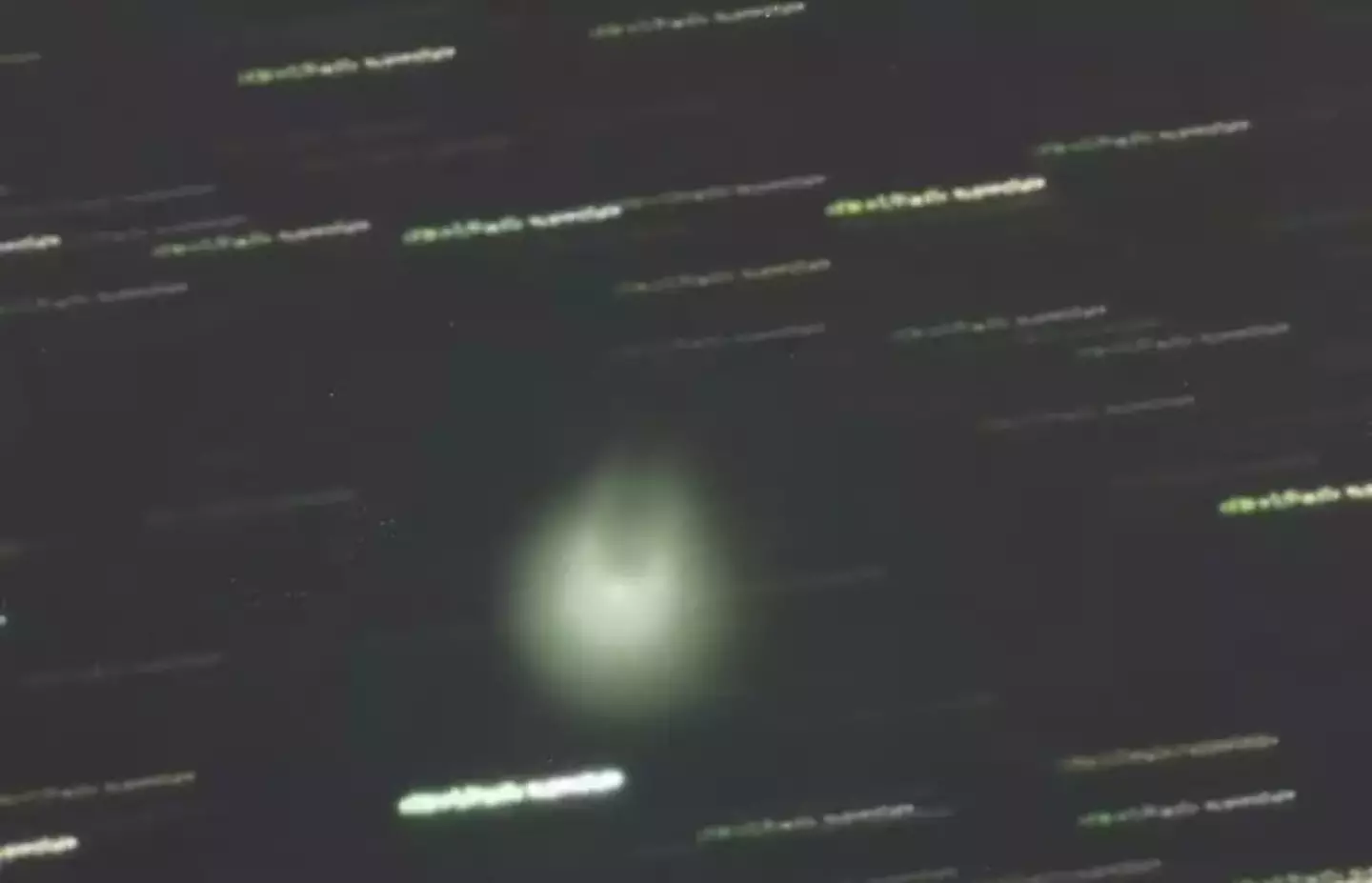
An enormous comet is visible in the sky over the Northern Hemisphere - but you need to be quick if you want to see it.
The comet has the catchy name of 12P/Pons-Brooks, or 'Mother of Dragons', and will be visible in the night sky in the northern hemisphere in April.
Measuring some 10.5 miles across, the comet makes Mount Everest look like a mole hill.
It's also on a fascinating journey which means that this may be the only chance you have to see the comet.
So it you are an amateur astronomer, or are simply interested in taking a look at this comet, then you'd better get your skates on because the clock is ticking.
Advert
If you would like to see it, there are a few things to watch out for as it hurtles through space.
What does the 'Mother of Dragons' comet look like

Luckily for us Earth-dwellers, the comet has quite a distinctive appearance.
Advert
To spot it, you need to search the skies for a green blob with a hazy-looking tail coming from the back.
In October 2023, scientists found that the comet had actually exploded in space twice in the space of just four months.
At the centre of the celestial object is a mixture of dust, gas, and ice, which has the technical name cryomagma.
If you know your Ancient Greek, you can figure out that means 'ice lava' - which is extremely cool both literally and figuratively.
Why is the comet called the 'Mother of Dragons'
And before you think it, no, it's not because it burnt a witch to death and hatched three dragons in the desert like on Game of Thrones.
Advert
But rather it's because it might be connected to another phenomenon in space - the kappa-Draconids meteor shower.
Researchers at the European Space Agency think that 12P/Pons-Brooks might be the originator - or parent - of the meteor shower.
And this isn't the only unusual name the comet has either.
Previously, it's appearance looked like it had horns protruding from it, leading to the chilling name 'Devil Comet'.
Why do we need to hurry up to see it?
The comet is following a path through through the solar system which only takes it into the inner solar system once every 71 years.
Advert
At the moment, Mother of Dragons is passing into a place where it is visible to us here on Earth.

But once it disappears from our view back into the solar system, it will not visible for another 71 years.
So unless we somehow invent something to substantially extend our lives, it's unlikely anyone older than around 20 will get the chance to see it again.
What time can I see the 'Mother of Dragons' comet
Gregory Brown, an astronomer at the Royal Observatory Greenwich, said the comet will be visible to the naked eye.
Advert
He told The Daily Mail: "The comet can now be found in the constellation of Aries which is visible in the early evening, over in the west. It will only become visible after twilight and sets by around 10pm BST.
"While it may be possible to see with the unaided eye, it is best to try and observe with a pair of binoculars or a small telescope."
Where can I see the 'Mother of Dragons' comet
As recommended by scientists, sky-gazers should be looking in the west-northwest direction, just above the horizon and north of the Great Square of Pegasus constellation.
Advert
As the comet nears the Sun and Earth, we should be able to spot it towards the end of April.
By April 21, it will be 72.5 million miles (116.8 million km) from the Sun, and come June 2, it will be 144 million miles (232 million km) from Earth.
So, if you reside in the northern hemisphere, now is your chance as come June, it can only been seen by those in the southern hemisphere.
Astronomer Jessica Lee said: "It will grow fainter and fainter again as it travels towards the outer solar system and won't approach the Earth again until 2095."
Topics: News, World News, Space
